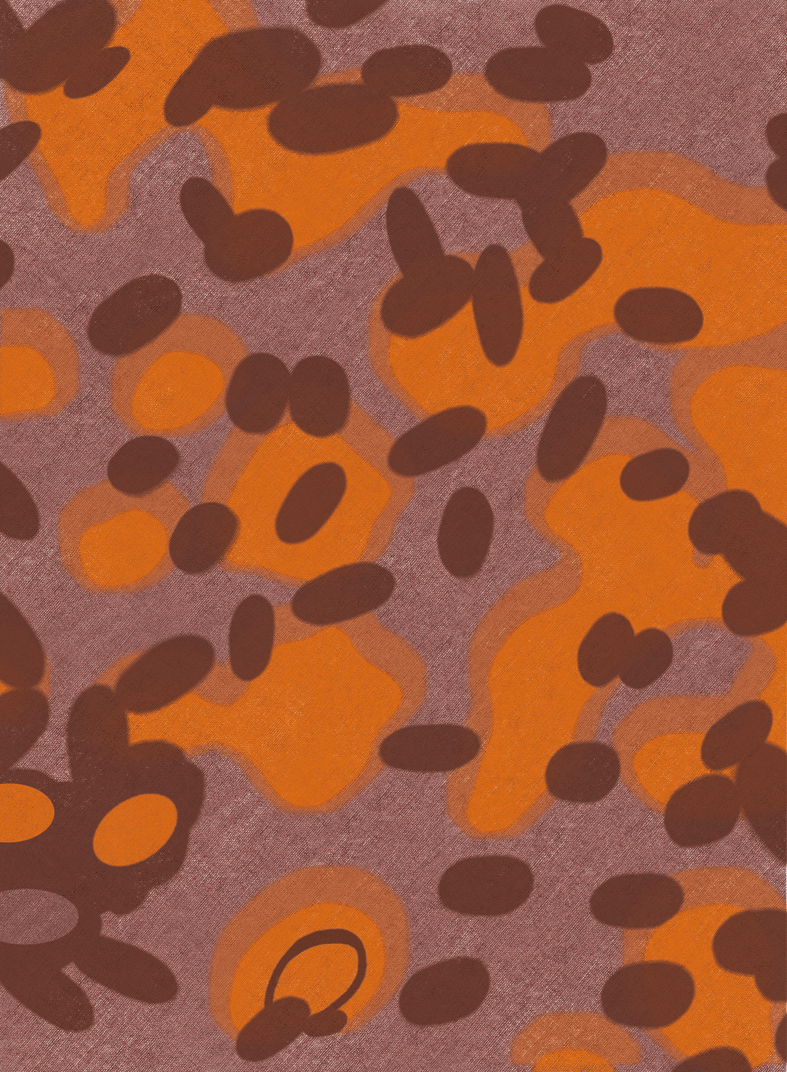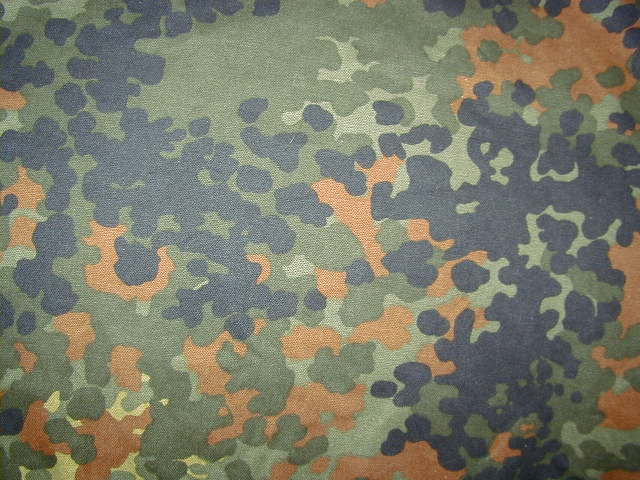Flecktarn (German: "pattern camouflage"; also known as Flecktarnmuster, Fleckentarn or simply Fleck) is a 3-, 4-, 5- or 6-colour disruptive camouflage pattern. The use of spots creates a "dithering" effect, which eliminates hard boundaries between the different colours in much the same way the squares in the newest digital camouflage patterns do. The pattern is designed for use in temperate woodland terrain. It has been adapted as desert camouflage by varying the colours. History
The Germans had experimented before World War II, and some army units used "splinter" pattern camouflage. Waffen-SS combat units experimented since 1935 with various patterns. The first and a lot of other SS-camouflages was designed by Prof. Johann Georg Otto Schick.
* Platanenmuster – "plane-tree pattern" (1937 to 1942) – spring/summer- and autumn/winter variations

* Rauchtarnmuster – "blurred edge" (1939 to 1944) – spring/summer- and autumn/winter variations
* Palmenmuster – "palm pattern" (ca. 1941 – ?) – spring/autumn variations

* Beringtes Eichenlaubmuster – "oak leaf B" (1942 to 1945)
* Eichenlaubmuster – "oak leaf A" (1943 to 1945) – spring/summer- and autumn/winter variations
* Erbsenmuster – "44 dot" (1944 to 1945)– Originally meant to replace all other SS camouflage patterns
* Leibermuster (1945)
All names of the German camouflages are not authentic, an exception is the word "Leibermuster".
Modern Flecktarn
In 1976, the Bundeswehr in Germany developed a number of prototype camouflage patterns, to be trialled as replacements for the solid olive-grey "moleskin" combat uniform. At least four distinct camouflage patterns were tested during Bundeswehr Truppenversuch 76 ("Bundeswehr Troop Trial 76"). One was called "Dots" or "Points", and one was called "Ragged Leaf" or "Saw Tooth Edge".
Modern German Flecktarn introduced 1990

Of the patterns tested, that which is today known as Flecktarn was selected for adoption. The word is a composite formed from the German words Fleck (spot, blot, or pattern) and Tarnung (camouflage). The Bundeswehr kept its green combat dress throughout the 1980s, however. Flecktarn was only widely introduced in 1990, after trials beginning in 1988.
In Germany, the Flecktarn camouflage pattern is used by all Bundeswehr service branches, the Heer (army), the Luftwaffe (air force), some Marine (navy) units and even the Sanitätsdienst (medical service). It is also used by snipers of the Österreichisches Bundesheer (Federal Army of Austria) and Belgian Air Force ground personnel and airborne infantry. France tested Flecktarn for use but rejected it; the Dutch army also tested and rejected it, allegedly because it was "too aggressive". Flecktarn was seen as controversial because of its (vague) resemblance to the Waffen-SS "peas" and "oak leaves" patterns, which also used dots in various colours.
Flecktarn is the basis for Bundeswehr Wüstentarn (desert camouflage), Danish T/78 camouflage and Danish M/84 camouflage, including a desert variation of the Danish pattern. A variation of the Flecktarn camouflage is also used by the Russian Army and is called "Sever" (Russian for "North") sometimes also referred as Flectar-d, Japan's Type II Camouflage, and is used by the Chinese military in Tibet and some police units in Poland. It is rumoured it even inspired the later CADPAT (Canada), MARPAT (U.S. Marines) and ACUPAT (U.S. Army) patterns.


